ألكسندر كالدر (1898-1976)
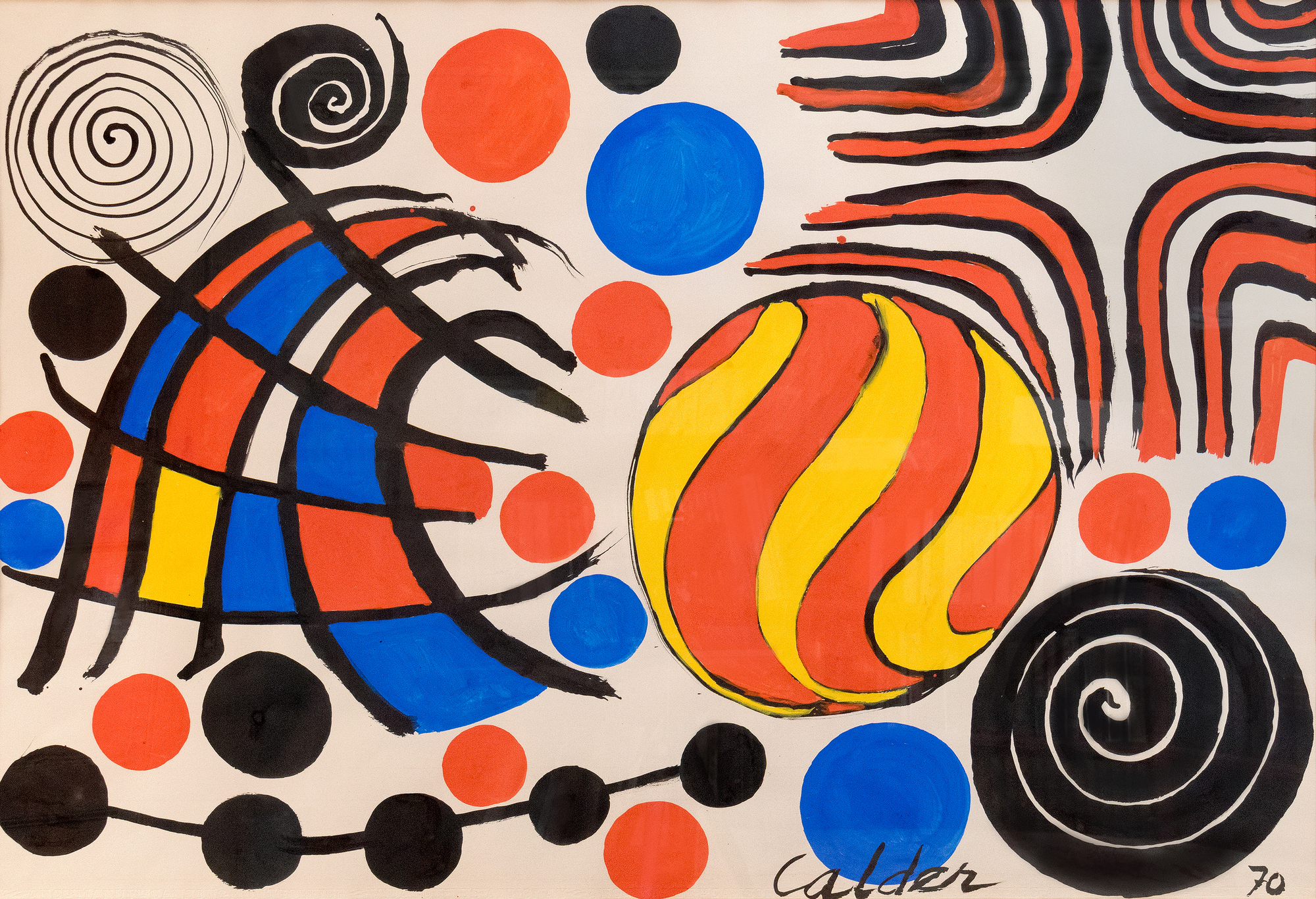
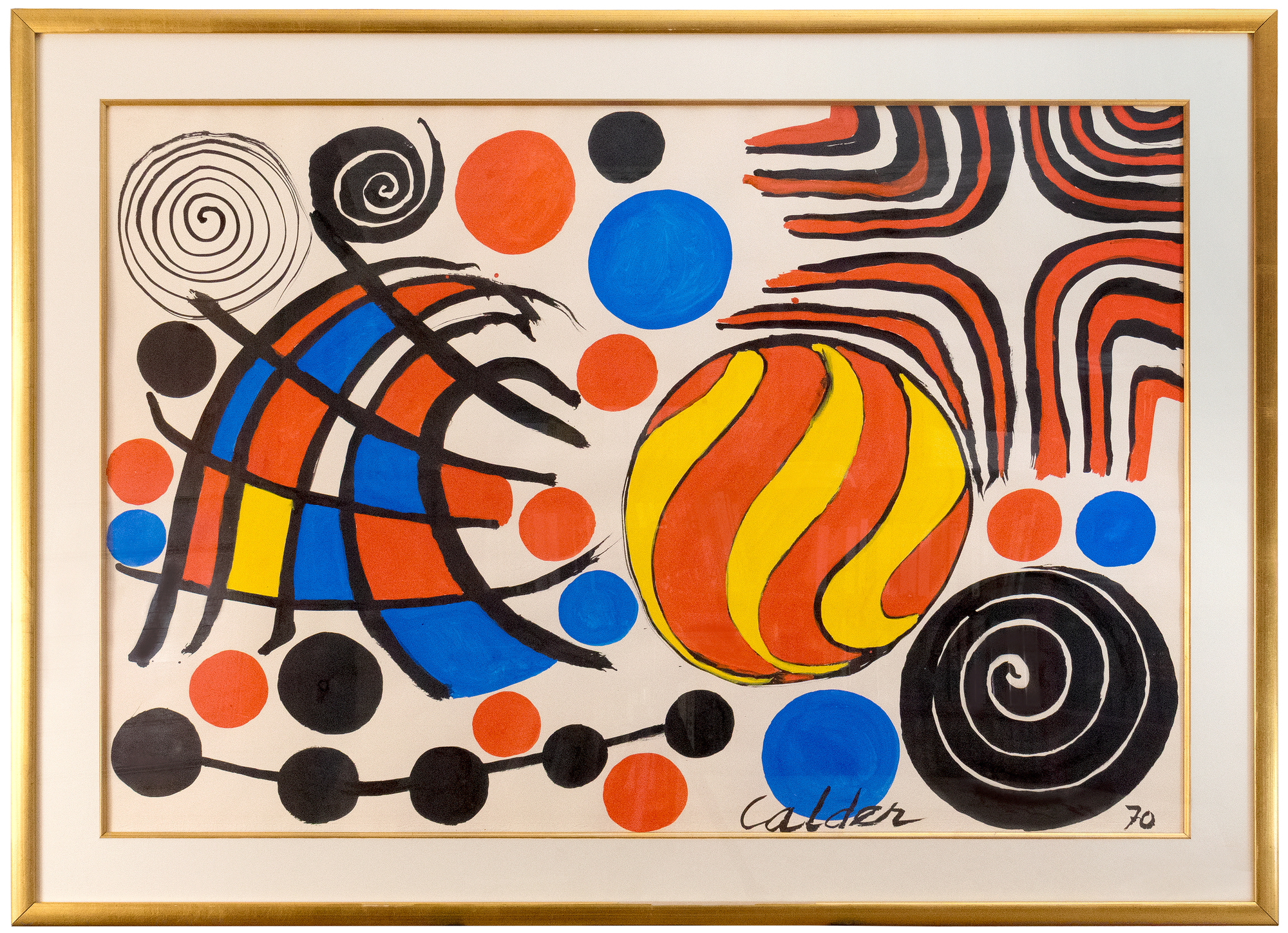
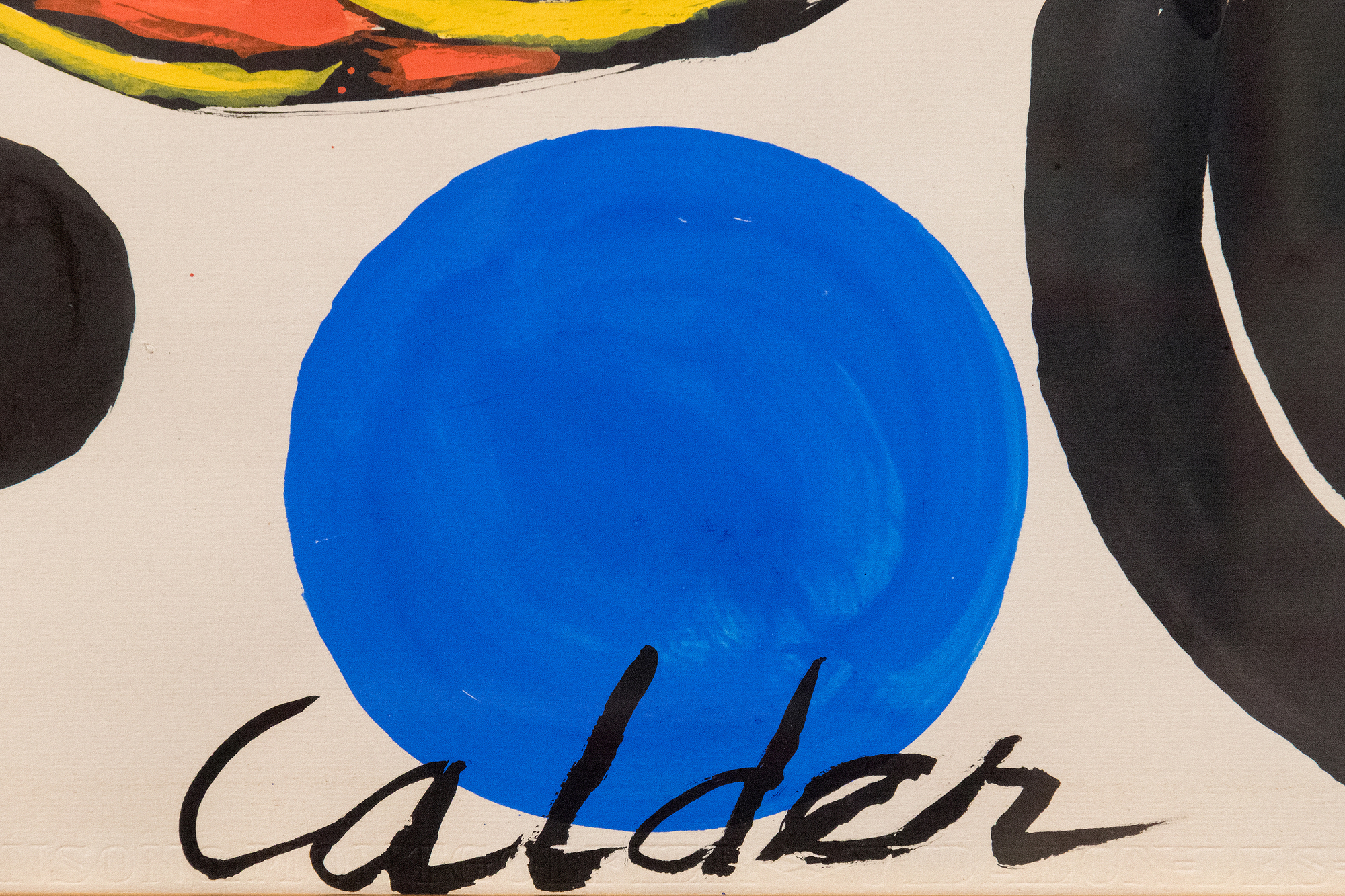
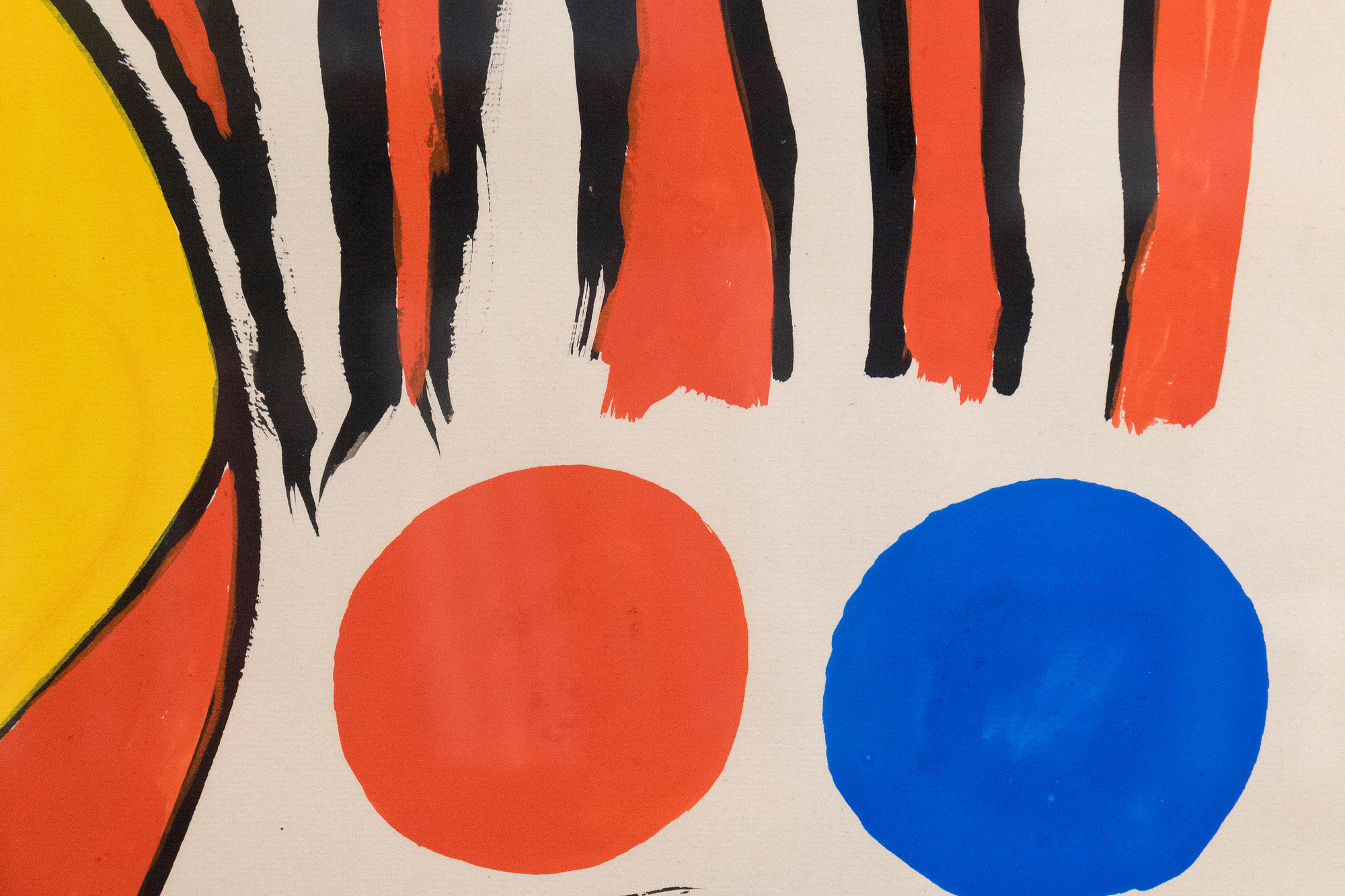
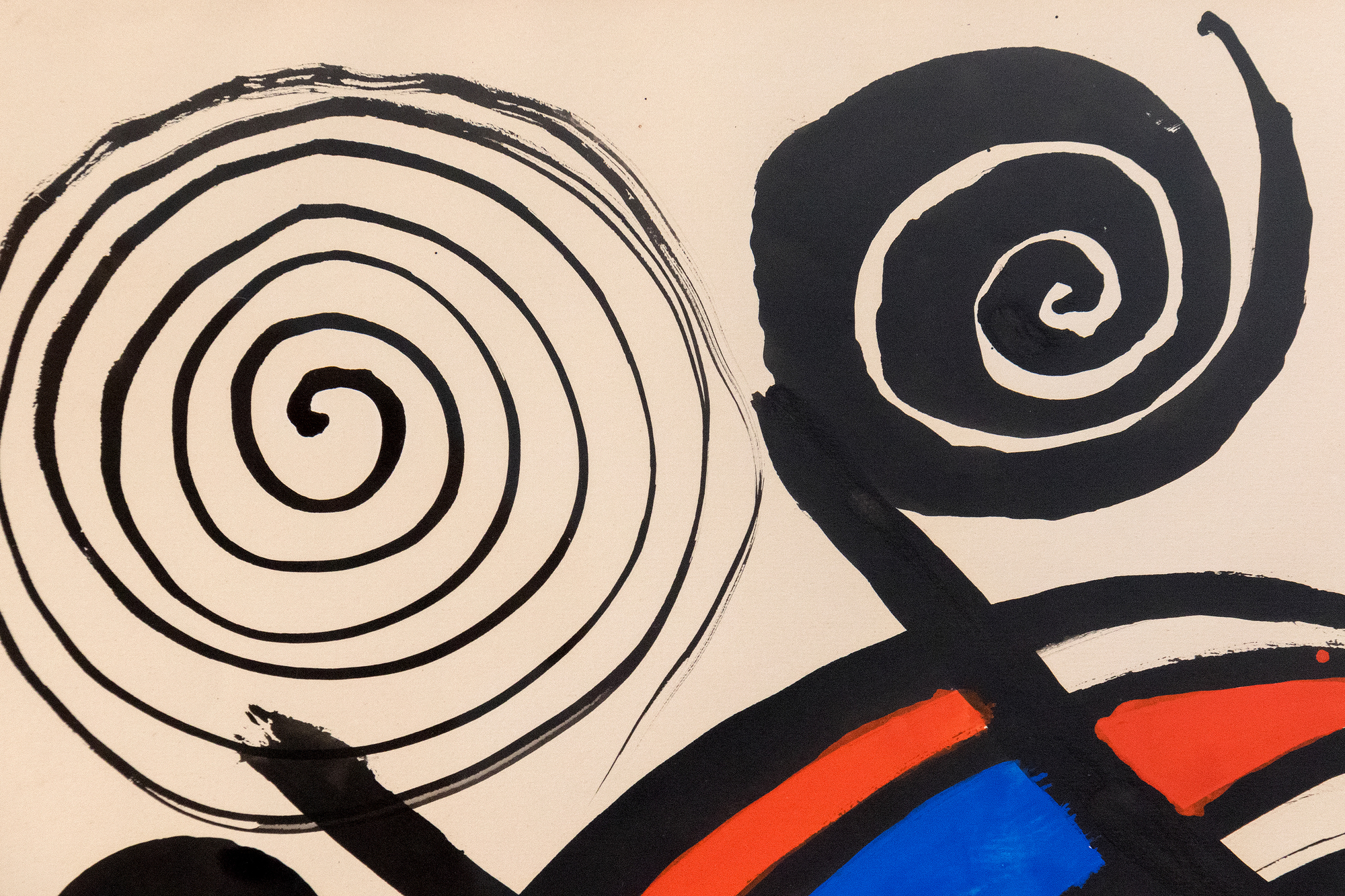
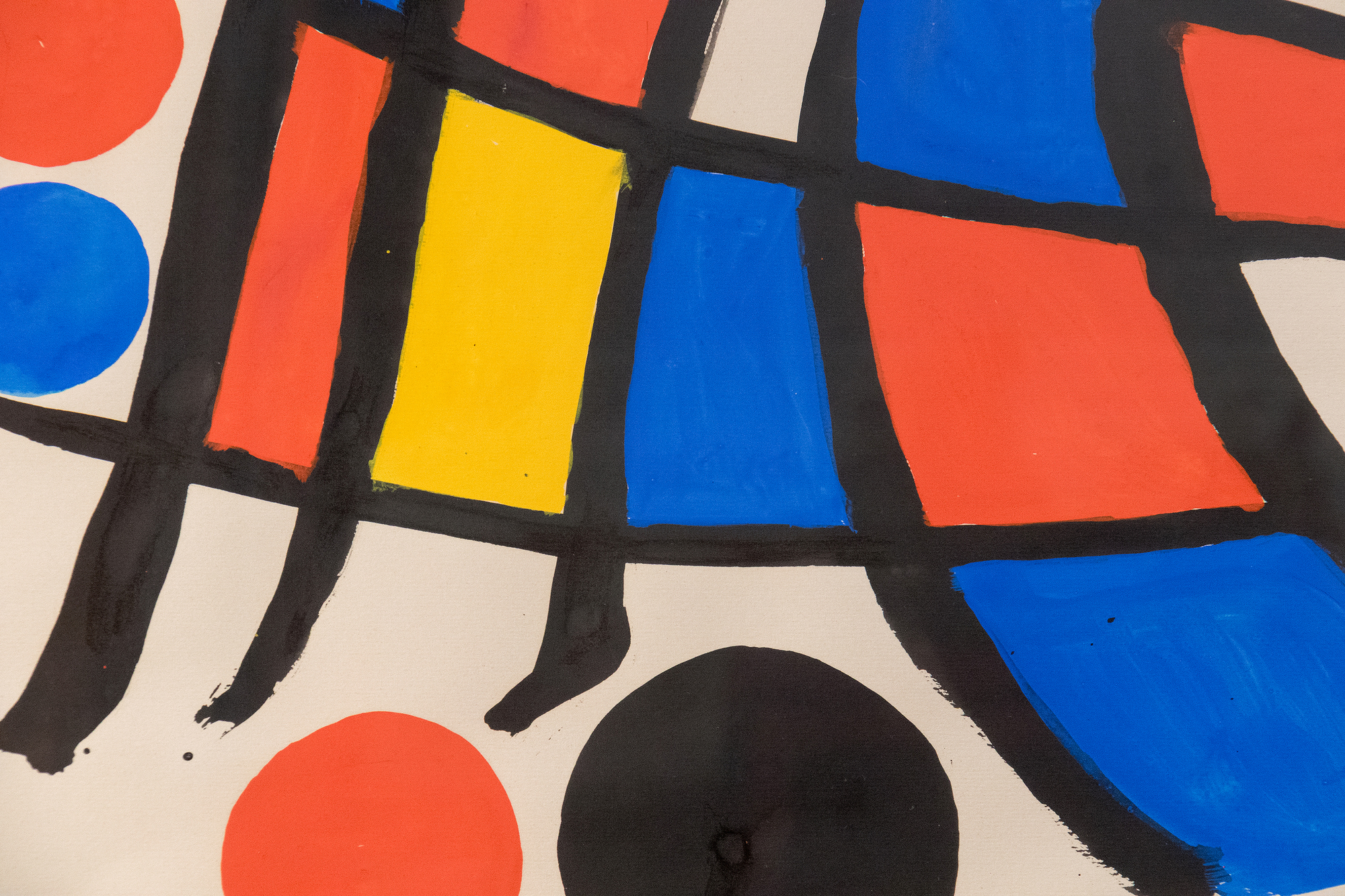
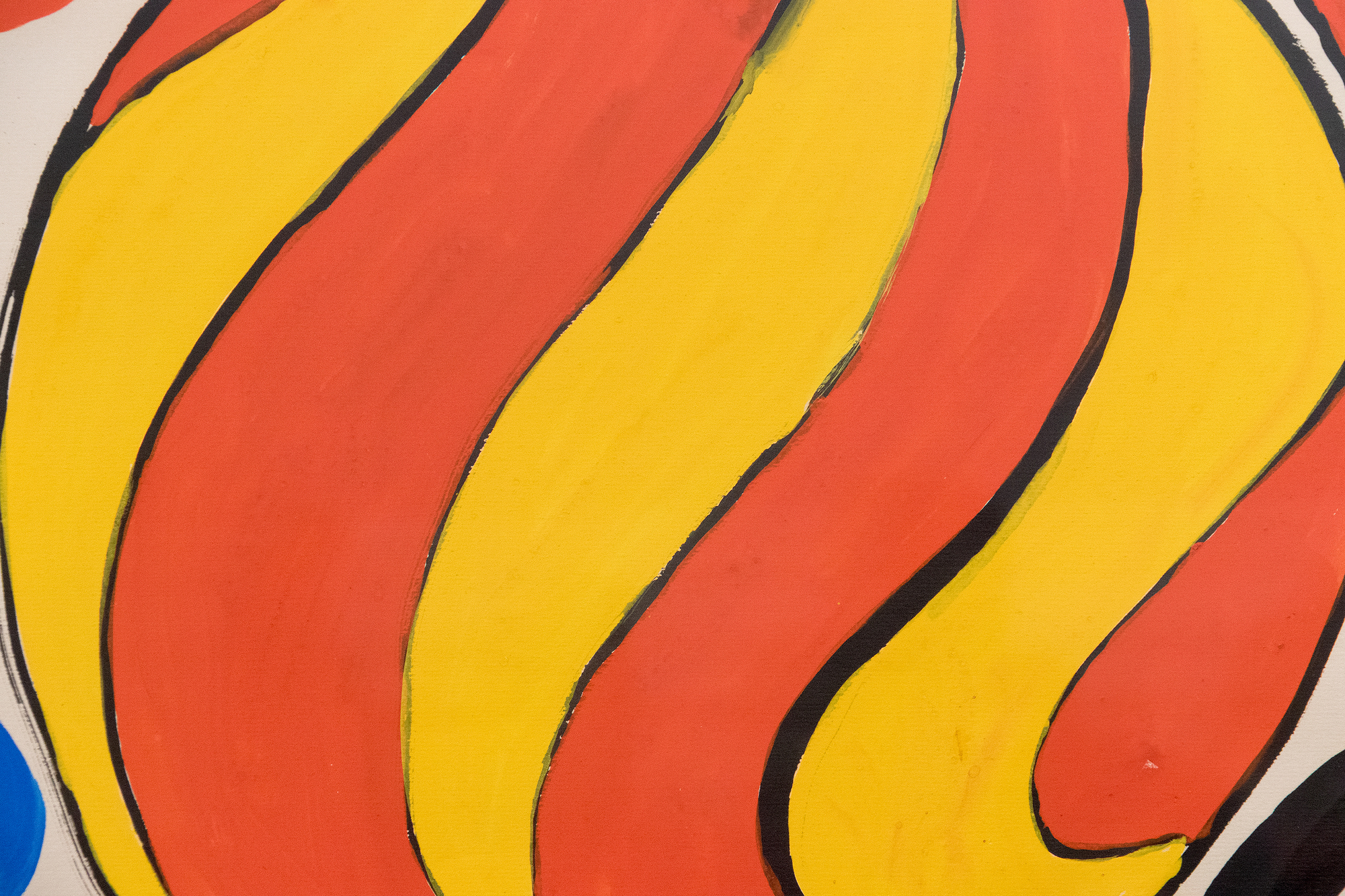
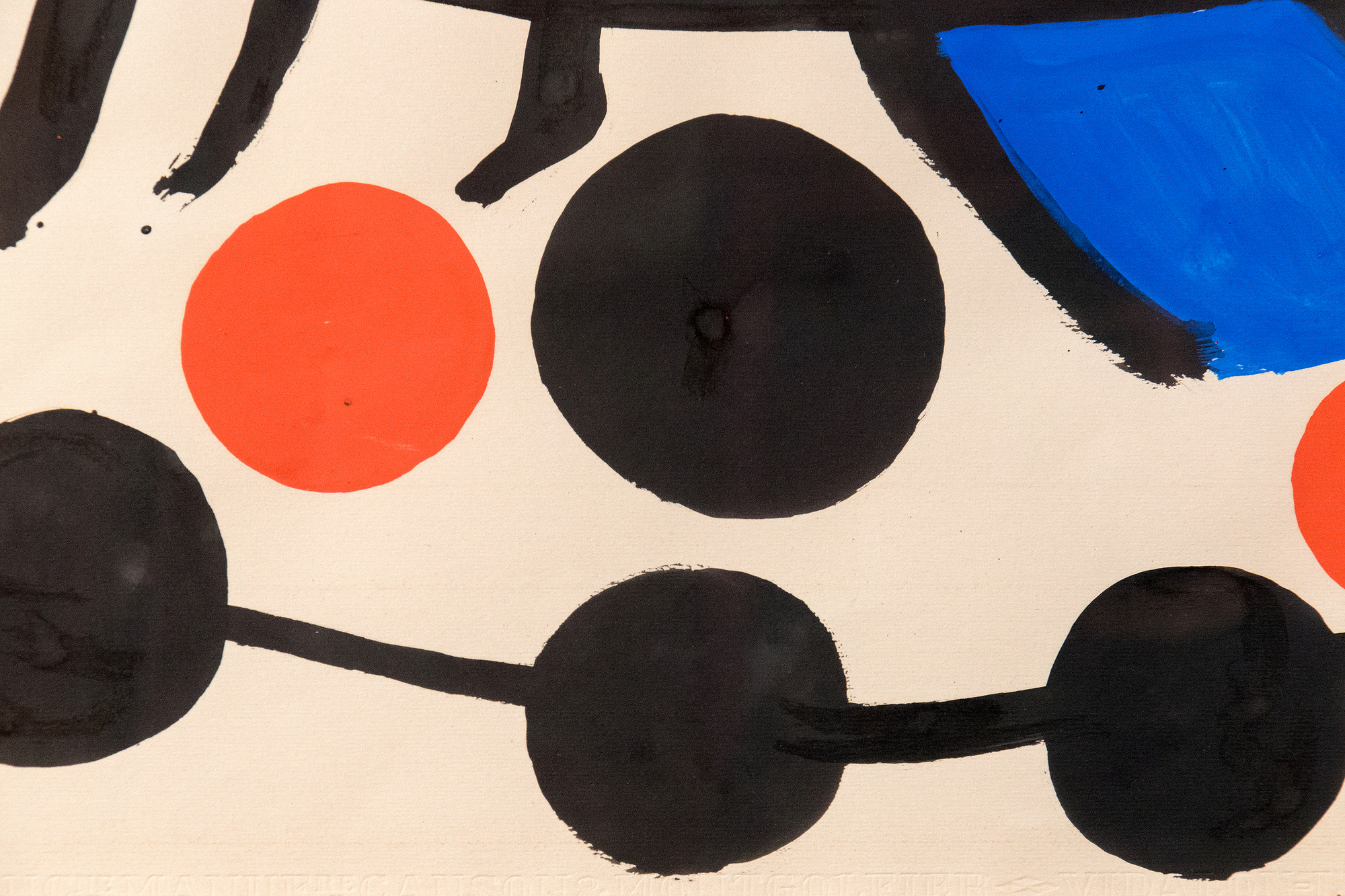
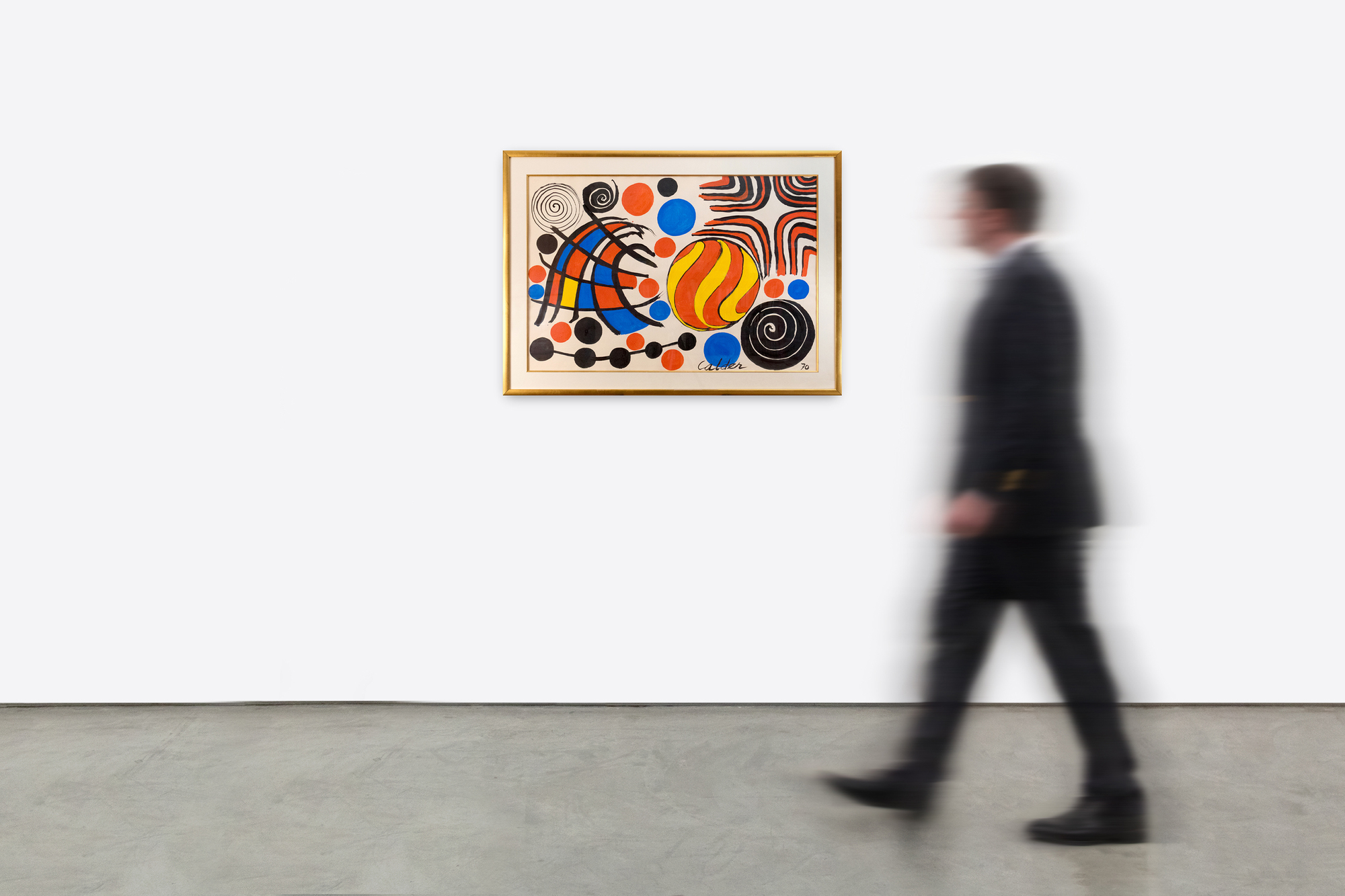
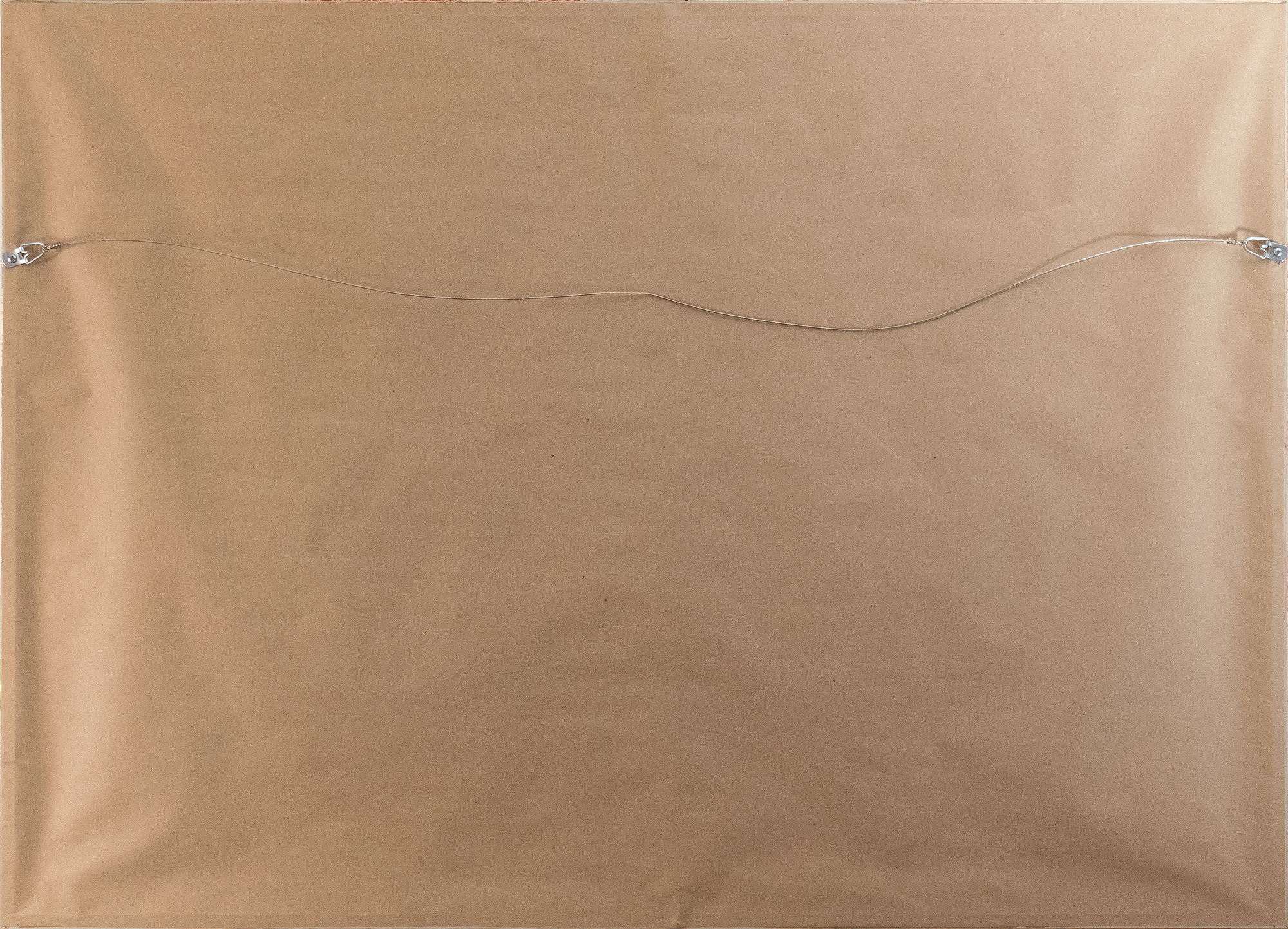
الاصل
مجموعه خاصهالسعر250,000
في هذه اللوحة التي تعود إلى عام 1970، يستخدم كالدر مجموعة متنوعة ومكتظة بالسكان من الزخارف البصرية. تطفو الدوائر الكبيرة ذات اللون الأحمر الفاتح والأزرق والأسود بين اللوالب والأشكال التجريدية الأخرى، بينما يبدو الجرم السماوي الأصفر المركزي، المخطط بالأحمر، وكأنه يشع طاقة توحي بالحركة أو الحرارة. إلى اليسار، يقدم هيكل من الخطوط والأشكال المتقاطعة موجة مقيدة معمارياً، بينما تحرك اللوالب الديناميكية التكوين. والنتيجة هي عرض احتفالي لعناصر كالدر المميزة - الألوان الأساسية الجريئة والأشكال الهندسية والخطوط المتدفقة - يتفاعل كل منها في إيقاع متناغم ومتناغم وحيوي.


